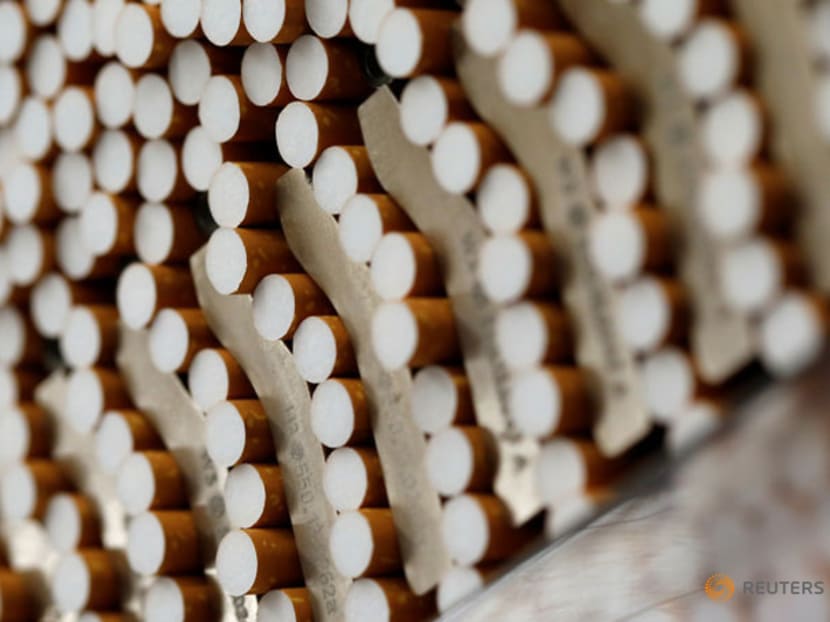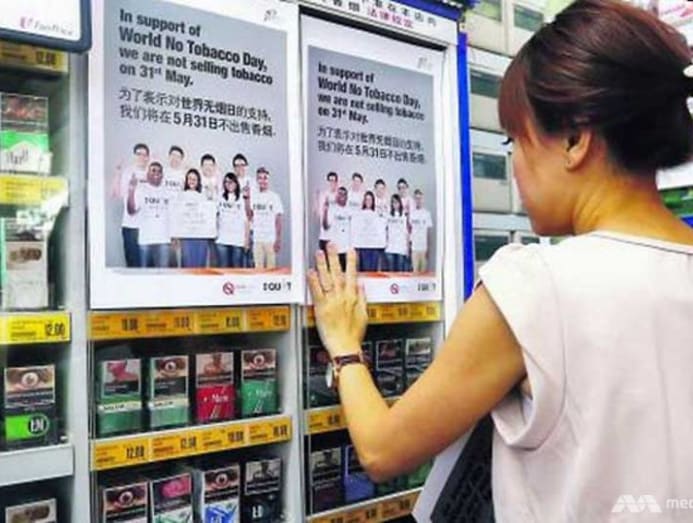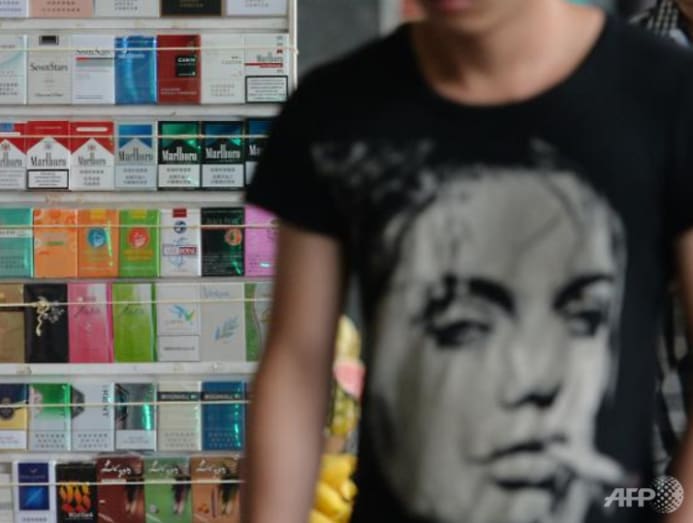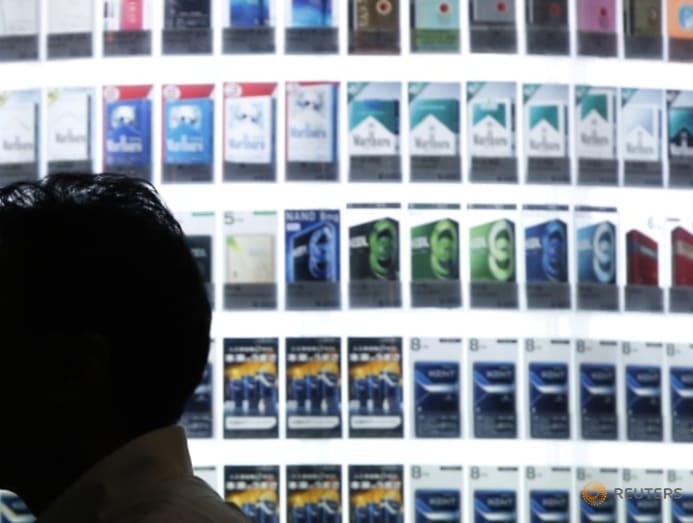commentary Commentary
Commentary: Smoking is an archaic habit with no place in modern society
The move to raise the legal age for smoking gives a much needed boost to Singapore's efforts at reducing the prevalence of smoking among youths.

Cigarettes are seen during the manufacturing process in the British American Tobacco Cigarette Factory (BAT) in Bayreuth, southern Germany, April 30, 2014. REUTERS/Michaela Rehle/File Photo
Shocking as it sounds, many doctors used to smoke.
The groundbreaking study which first confirmed the link between smoking and lung cancer was carried out on British doctors in the early 1950s. UK Medical Research Council member Sir Richard Doll, who conducted the study chose doctors as his research participants because many of them smoked, and it would be easier to observe what happened to them as a result of smoking.
Within three years of observation, 37 died from lung cancer. All were smokers. The number of deaths rose to 70 after five years. His work provided strong evidence of the dangers of smoking and laid the groundwork for future public debates about smoking

The impact of such combination of measures was visibly evident. The proportion of smokers among male Singaporeans aged 18 and above declined from 42 per cent in the late 1970s to 24.3 per cent in 2010, and the per capita consumption of tobacco decreased from 2.36 kilograms to 0.77 kilograms in a short span of 30 years. The incidence of lung cancer also halved from around 60 per 100,000 in the 1980s to 30 per 100,000 today.
Nonetheless, the decline in the proportion of smokers has since hit a plateau over the last ten years, hovering around 23 to 24 per cent in males, and 3.5 to 4 per cent in females, and has not budged since. What this effectively means is that the number of new smokers now equal those who have died from or quit the habit. To lower the proportion of smokers, more aggressive efforts will be required to prevent Singaporeans from picking up the habit.
WILL RAISING THE MINIMUM LEGAL AGE REALLY HELP STEM THE HABIT OF SMOKING?
Senior Minister of State for Health, Dr Amy Khor, announced recently on Thursday that the legal age for smoking and buying tobacco products will be raised from 18 to 21. This will be a much needed boost to Singapore’s efforts at reducing the prevalence of smoking among youths.
Raising the minimum legal age (MLA) makes it harder for them to get tobacco products either directly or through their social networks. More importantly, it contributes toward de-normalising smoking.
95 per cent of smokers in Singapore had their first puff before age 21. Increasing the legal smoking age to 21 reduces youth exposure to tobacco products during their adolescence – a critical stage of life where they are more susceptible to peer pressure, where their psycho-social maturity, including sensation seeking, impulsivity, and future perspective taking, are still not fully developed.

A man passes a tobacco shop on World No Tobacco Day on May 31, 2016. (Photo: AFP)
Detractors may question the rationale for raising the MLA.
Some critics argue that raising the legal smoking age is simply delaying initiation into the habit. But the fact is that those who do not pick up smoking by age 21 are unlikely to ever begin. There is evidence that the younger the adolescent is when he starts smoking, the higher the level of nicotine dependence, and the greater the probability of him becoming a long-term, heavy smoker.
Others may make invidious comparisons. After all, if an 18 to 20 year old can legally marry, drive, consume alcohol or serve national service, why is he not allowed to smoke?
Tobacco smoking is clearly very different from and far outweighs the aforementioned activities when it comes to fatalities. It is deliberately designed to be addictive and is known to cause disease and disabilities in both the smokers, as well as those breathing in secondhand smoke. There is no moderate level of consumption at which tobacco smoking is safe – for the smoker and those around him. It is a unique product that kills its user when used as instructed.
Another objection is that raising the MLA may lead to the emergence of a black market peddling tobacco products to underage smokers. To deal with that, law enforcement efforts can be intensified, and harsher penalties imposed on the sellers. For instance, New York City stepped up its enforcement and increased penalties for supply of illegal tobacco products when it raised the MLA.
Of course, even with these efforts, it is impossible to entirely curtail a black market. However, future generations of youths will be discouraged from smoking, disease will be averted and lives saved albeit with this negative “side effect”.
ADOPT AN APPROACH THAT IS SYMPATHETIC, EDUCATIONAL AND SUPPORTIVE
In meting out consequences for underage smokers, we ought to bear in mind that they too are victims of Big Tobacco advertising strategies directed at the aspirations of impressionable youth.
Our best defence would be to adopt an approach that is sympathetic, educational and supportive of their efforts to quit the habit. To successfully curb smoking initiation in our youths, we would do well to ensure adequate enforcement of the MLA on retailers who sell tobacco to minors.
The debate over the Government’s move to raise the minimum legal age is a reminder that no single silver bullet to reduce smoking prevalence exists. The MLA is only but one of the existing and additional future measures for effective tobacco control. Singapore has banned electronic cigarettes which tobacco companies intentionally market as “safer” to youths. They also claim that heated cigarettes are safer but studies have shown that they have the same nicotine content as traditional cigarettes.

Second, several countries like Australia, France and UK have augmented their GHW with standardised packaging. Also known as "plain packaging", this requirement removes all branding elements such as colour, image, trademarks, logos and text, and only allows the brand name to be printed in a standardised font, size and location on the pack. This reduces the appeal of the pack, weakens any branding power each product might have, and strengthens the impact of the GHW.
Australia was the first nation in the world to adopt plain packaging in 2012. Even though the health impact of the policy will take years to be fully seen, a post–implementation review published in February 2016 reported that the policy has reduced smoking and exposure to tobacco smoke, and is expected to continue doing so.
Third, price and taxes are effective tools for tobacco control. According to the World Health Organisation, a 10 per cent increase in tobacco prices will reduce consumption by about 4 per cent in high-income countries. We should raise tobacco taxes further as part of our suite of enhanced control measures, if we think that smoking remains a serious issue even after the MLA has been raised.
Last, internationally, there is a movement to go beyond conventional tobacco control strategies and adopt fundamentally different strategies that aim to eliminate smoking altogether. These are broadly classified as “Endgame Strategies”. Singapore should begin thinking about eliminating smoking completely. We would not be the first country to endorse and adopt this approach. New Zealand, Finland, Canada, Sweden and France have all endorsed the goal of achieving a smoke-free society in the next eight to 23 years.
Smoking was introduced commercially in the 1880s. It is an ancient and archaic habit, and has no place in our modern and progressive society.
Professor Chia Kee Seng is Dean of the Saw Swee Hock School of Public Health at the National University of Singapore.





